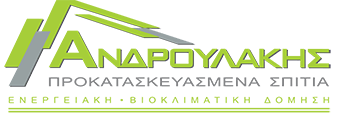No other raw material offers the same potential for development and shaping as wood.
Beyond its timeless aesthetic, wood combines high strength, light weight, and flexibility.
Swedish timber, in particular, is a benchmark and reference point for the global market, and rightly so, after years of research and development in the chemistry and engineering of this natural material.
Its quality is exemplified by the comprehensive drying process in specialized kilns, which renders the wood highly durable. After this process, the residual moisture content ranges between 12% and 15%, ideal for structural timber.
The Swedish wood we source demonstrates up to 80% higher mechanical strength compared to conventional timber, along with up to 50% reduced maintenance requirements.
Vacuum Method
The process that renders the wood highly durable is called impregnation using the vacuum method.
Stage 1 – Initial Vacuum Stage
The timber is placed in a processing cylinder and subjected to an air vacuum of -0.85 bar. Depending on the wood’s structure and cross-section, it remains in the chamber for 15 minutes to 1 hour. During this stage, atmospheric air is removed from the wood cells.
Stage 2 – Cylinder Filling Stage
The initial vacuum from the first stage is maintained while the cylinder is filled with the wood preservative solution.
Stage 3 – Pressure Stage
The wood and preservative are subjected to a pressure of 12 bars. The pressure stage continues until the preservative is fully absorbed into the wood, ensuring complete impregnation and penetration of the preservative throughout the wood structure.
Stage 4 – Cylinder Draining Stage
The cylinder is emptied of any preservative solution that was not absorbed by the wood.
Stage 5 – Final Vacuum Stage
After removing the remaining preservative, an air vacuum of -0.85 bar is applied for 10 to 30 minutes to ensure the preservative is completely absorbed into the wood.
Next-Generation Preservatives – Eco-Friendly and Free of Chemical Additives
Traditional CCA-type preservatives contain chromium and arsenic, substances linked to allergies and genetic mutations.
For this reason, next-generation preservatives have undergone extensive toxicological evaluation and long-term laboratory testing. Wood preservation now relies on a copper complex (CuHDO), which is environmentally friendly and safe for humans.
All preservatives used in Androulakis timber are free from chromium and arsenic and are certified by the UK Wood Protection Association, as well as by corresponding authorities in Germany and Australia.
Importantly, wood impregnation using the vacuum–pressure–vacuum method should not be confused with less effective techniques, such as immersion in open tanks.
What Advantages Does the Swedish Innovation Offer?
The wood breathes naturally, regulating humidity.
Natural, chemical-free insect protection.
Hard and durable timber.
Ideal specific weight for safe constructions.
High mechanical strength, resistant to crushing.
Chemically neutral.
Certified quality.
Up to 80% stronger than conventional timber.
Before you even think about decorating your bathroom or living room, choose your foundation wisely. Select one of the most suitable building materials for prefabricated construction:
Swedish timber — our material of choice.

